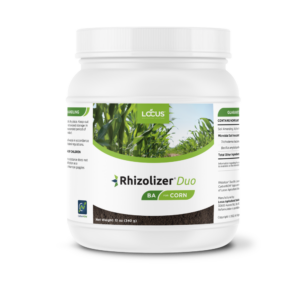
A Tissue for the Issue: Optimizing Corn Growth Stages
A look into strategic tissue sampling and premium biological inputs can maximize corn yields
By: David Dyson, Locus AG Lead Agronomist
As my three sons were growing up, unavoidable teenage angst would inevitably creep into discussions. During those moments, a popular saying in our house was to ask if they needed “a tissue for the issue”. Unlike teenagers, corn plants don’t talk back; but the need for a tissue for the issue is still there.
That’s because the best way to gauge how the corn crop is progressing during the season is to pull tissue samples.
A corn plant’s nutrient status isn’t always visible to the naked eye, and by the time deficiency issues show up, yield potential may already be lost. The key to unlocking better crop performance? Pulling tissue samples at the right growth stages to spot hidden nutrient gaps before they impact yield.
There are three critical corn growing stages in a corn plant’s lifecycle:
- V5 corn growth stage
- V9 corn growth stage
- VT corn growth stage
If you are going to pull tissue samples, these are the corn growing stages to perform such testing. By analyzing tissue samples at the three critical growth stages—V5, V9, and VT—you can optimize in-season fertility decisions and even enhance results with biologicals.
Let’s dive into how V5 tissue samples reveal what’s happening in your fields.
How to determine corn growth stages
Before diving into tissue sampling, it’s important to understand how to properly determine the different corn growth stages. Accurately staging corn is key to optimizing inputs and overall crop management decisions. One method is by evaluating the corn leaves following these steps:
- Step One: Find the first corn leaf. The first leaf of a corn plant is always rounded at the tip (figure 1). This distinct shape makes it easier to identify. Finding this corn leaf is a starting point for staging.

This picture, taken in 2022 in northern Indiana, highlights the first corn leaf on the left side. As you can see, the first corn leaf is always rounded on the tip.
- Step Two: Find the next staged corn leaf (the first collared leaf). After you find the rounded leaf, move up the stalk and locate the first leaf with a visible white collar at the base (figure 2). This will be the next staged corn leaf.
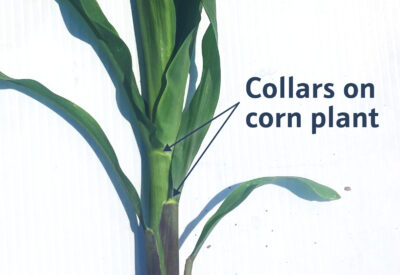
Figure 2: This picture shows the white collars that indicate individual corn growth stages.
- Step Three: Count the number of collared corn leaves. Each collared leaf represents a new growth stage, and each stage will correspond to the number following the “V”. For example, if you want to find V5 corn stage, look for the rounded leaf and count four more collard leaves.
By correctly staging your corn, you can ensure tissue samples are pulled at the right time, leading to more precise nutrient management and improved crop performance.
Why V5 corn growth stage is the most important
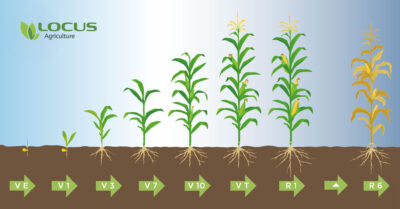 Out of the three critical corn growth stages, the V5 stage is the most important. At this stage, the corn plant is making foundational decisions that will impact final yield.
Out of the three critical corn growth stages, the V5 stage is the most important. At this stage, the corn plant is making foundational decisions that will impact final yield.
During the V5 growth stage, the corn plant will determine the maximum number of kernel rows around the ear. This decision is final—meaning any stress, nutrient deficiency or environmental issues that arise at this point can permanently reduce yield potential.
You might think that reducing the kernel rows around the ear from 18 to 16 will not make much of a difference. However, if you do the calculations reducing the ear by 2 rows could lose you 20 bu/ac.
Here’s the breakdown:
- If each ear typically produces 35 kernels per row, losing 2 rows per ear results in 70 fewer kernels per ear.
- Assuming 30,000 plants per acre, that’s 2.1 million fewer kernels per acre.
- If each bushel contains approximately 90,000 kernels, that equals 20 bushels lost per acre.
When December corn is trading around $4.50/bu, 20 bushels adds up to a $90 per acre reduction in revenue. Multiply that across thousands of acres, and the additional profit adds up quickly.
How to maximize yield in the V5 corn stage
To maximize potential yield, it is important to pack the plant with as many nutrients as possible before the V5 corn stage. The best course of action to accomplish this is through the use of specific biologicals.
Locus Agriculture has developed a corn treatment program proven to boost yields and crop productivity. The program includes Rhizolizer® Duo, which is applied to the seed at planting, and Bombigro®, which is applied to the plant as a foliar application during V5.
Rhizolizer® Duo biologicals for corn
The Rhizolizer Duo line of biologicals for corn are designed for in-furrow, hopper box or liquid seed treatment applications. They feature two strategically selected microbial strains:
- Trichoderma harzianum: A powerful fungus that enhances root development, nutrient solubilization and overall corn plant vigor.
- Bacillus amyloliquefaciens: A beneficial bacteria that improves nutrient use efficiency and ultimately boosts corn crop yields.
Both microbes are endophytic, meaning they colonize and live inside of the corn plant, not just in the soil. While these microorganisms grow and live up inside the plant, they release metabolites and organic acids and create an environment that helps make nutrients more efficiently absorbed into the corn tissue.
Bombigro® foliar soil amendment for corn
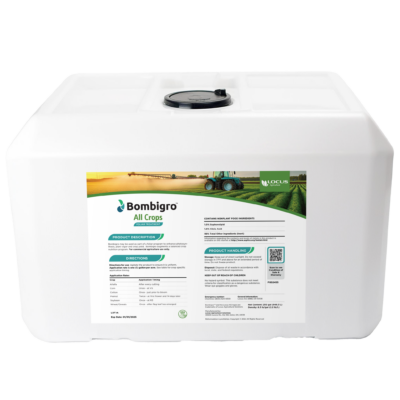 Bombigro is a powerful, foliar-applied soil amendment produced through a unique fermentation process. This biologically derived product enhances photosynthesis and improves crop vigor, resulting in an extra yield boost. The foliar application of Bombigro adds metabolites and organic acids directly to the plant through the leaves which are quickly absorbed for fast-acting benefits.
Bombigro is a powerful, foliar-applied soil amendment produced through a unique fermentation process. This biologically derived product enhances photosynthesis and improves crop vigor, resulting in an extra yield boost. The foliar application of Bombigro adds metabolites and organic acids directly to the plant through the leaves which are quickly absorbed for fast-acting benefits.
Both metabolites and organic acids will help the corn plant during the reproductive stages and increase yields. Ultimately, they ensure that corn is set up for success before, during and after the V5 growth stage.
Early biological application is crucial to corn yields
To maximize corn’s yield potential, applying biologicals early is key. The earlier beneficial microbes colonize the root zone and plant tissue, the greater their impact on nutrient uptake, root development and overall crop performance.
Locus AG’s Rhizolizer Duo biologicals are designed to be easily integrated into any farming practice. The product line is available in multiple application options, including dry powder and liquid formulations for:
- Box-applied treatment: Coats the seed for immediate microbial activation at planting
- In-furrow application: Places microbes directly in the root zone for rapid colonization.
- Liquid seed treatment: A seamless option for treating seed before planting.
Learn more about Locus AG biologicals.
Corn tissue sample results with Rhizolizer Duo biologicals
Throughout the years, the Locus AG agronomy team has pulled tissue samples on V5 corn. We have seen significant differences between corn seeds treated with Rhizolizer Duo and untreated corn seeds.
In tissue samples from V5 corn growth stage, corn seeds treated with Rhizolizer Duo Box Applied for Corn biologicals showed increased potassium, zinc and boron levels compared to the untreated check. This clears the path to increase the number of potential rows around the ear, resulting in higher yields. 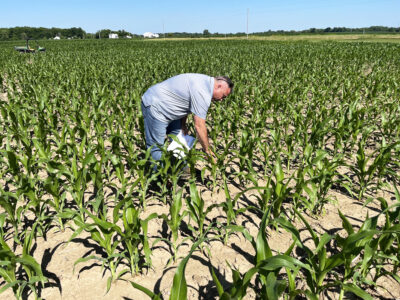
Data confirms corn yield boosts with Locus AG biologicals
The effectiveness of Locus Agriculture’s biologicals on corn isn’t just theoretical—it’s backed by multi-year, multi-season independent third-party trials with universities. These trials confirm statistically significant yield increases in corn with a 95% confidence level in repeatability.
Corn treated with Rhizolizer Duo alone yielded an average of 8.2 more bushels per acre (4.5% yield increase). When Rhizolizer Duo was used in a treatment program with Bombigro, the combination nearly doubled yield gains, reaching up to 14.1 bu/acre (7.2%).
Learn how to find and understand quality agriculture data.
Conclusion: Better Tissue Nutrition and Better Yields with Corn Biologicals
In conclusion, the V5 corn growth stage is a critical time for determining the number of rows around the ear of the corn plant. Making sure the corn plant has more nutrients absorbed into the tissue during this corn growing stage will increase the yield potential.
For growers looking to maximize corn yield potential, integrating Rhizolizer Duo and Bombigro into their crop management plan provides a scientifically proven way to boost nutrient efficiency, plant health, and—most importantly—profits.
- Apply Rhizolizer Duo at planting (box-applied, in-furrow, or as a liquid seed treatment).
- Follow up with a Bombigro foliar application for an even bigger yield boost.
The flexible application methods ensure that every grower, regardless of their planting setup, can incorporate Locus AG biologicals into their program and take advantage of their proven benefits on corn plants from day one.
Seeing is Believing: Corn Results with Locus AG Biologicals
See real results in real corn fields using Locus AG’s biologicals.
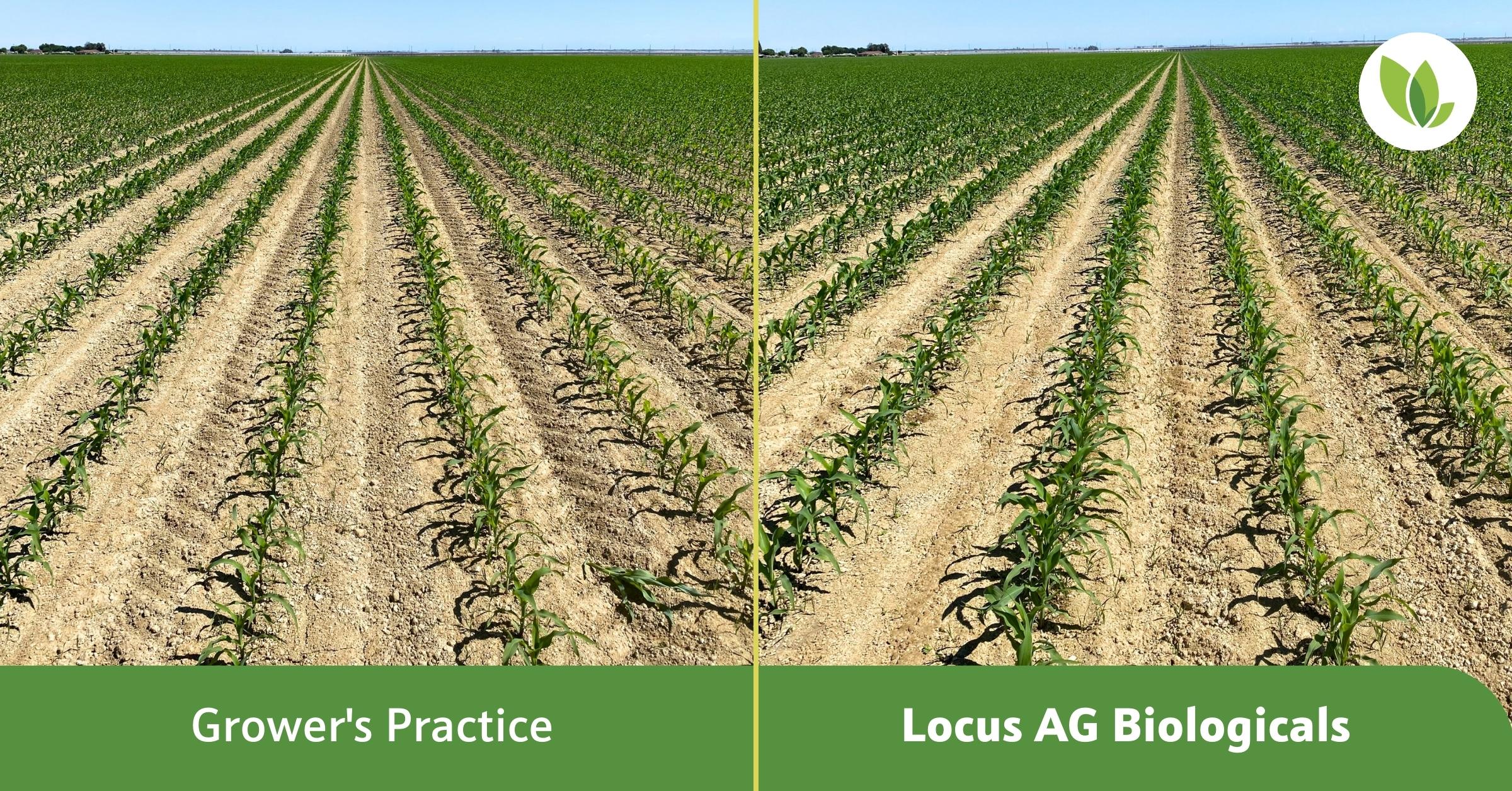
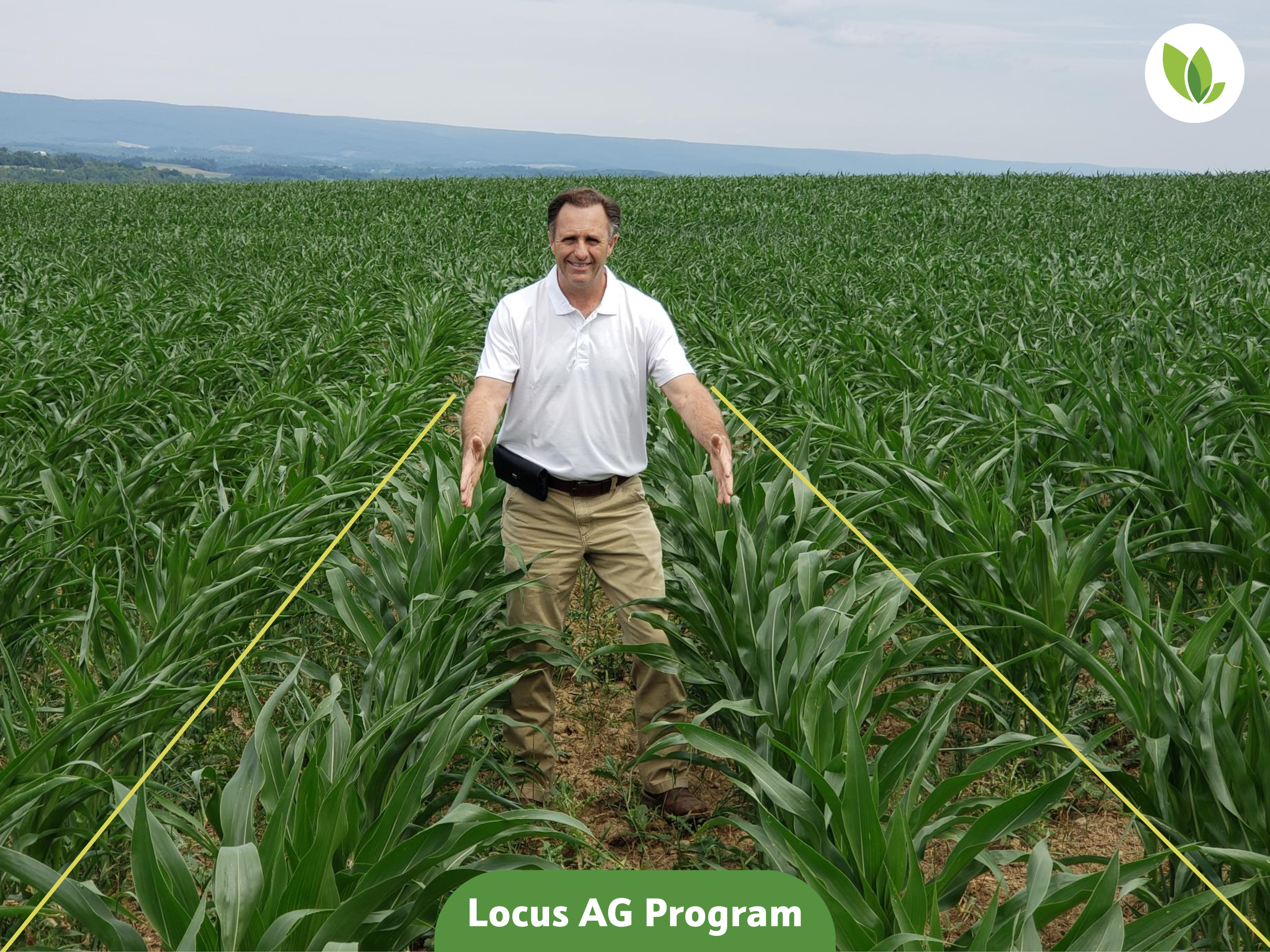
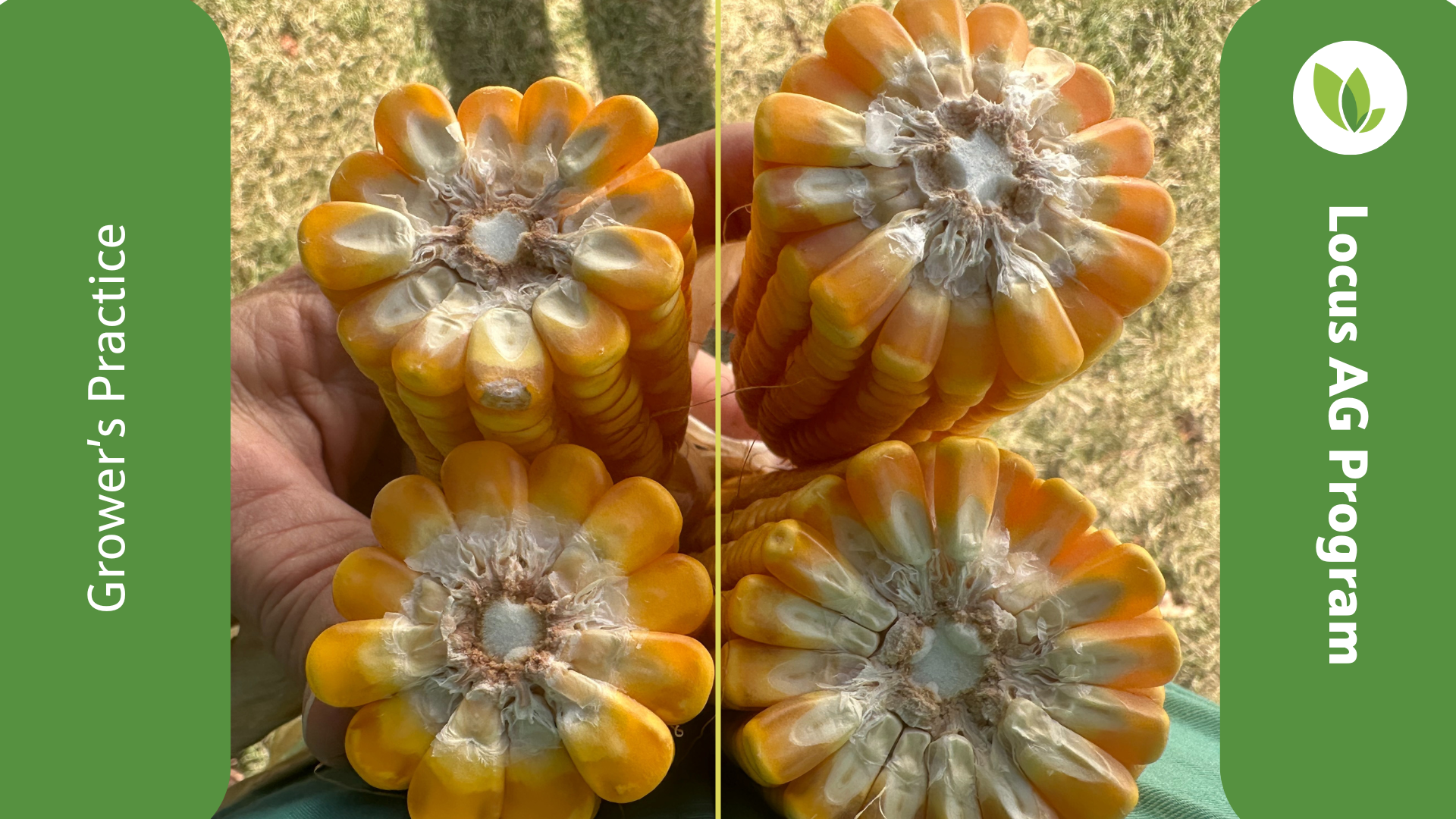

About the Author: David Dyson
David Dyson is the lead agronomist for Locus AG. He is an Indiana native and grew up on a dairy farm in the north central part of the state. Dave is a graduate of Purdue University with a degree in Crop & Soil Science. He has worked in the ag industry for 26 years and has an extensive knowledge of various agronomic topics. If you have any questions, Dave can be reached using the form below.
Interested in more information about Rhizolizer Duo or any other of the Locus AG soil products? Have a question for our agronomist? Contact us below.
Want to learn how Locus AG vital biologicals can increase your yields and profits?
Fill out the form below and one of our agricultural experts will be in touch.



